 |
 |
 |
| |
Classic Risk Factors, But Not HIV, Linked to Arterial Stiffness in Middle-Aged
|
| |
| |
14th European AIDS Conference. October 16-19, 2013. Brussels.
The researchers propose that the modestly but significantly greater arterial stiffness in people with than without HIV is clinically relevant. But the study showed that after statistical adjustment for smoking and hypertension, HIV infection is not independently associated with greater arterial stiffness. Smoking, high blood pressure, and markers of inflammation (hsCRP) and immune activation (sCD163)--all significantly higher in the HIV group--were independently associated with greater arterial stiffness. and lower CD4 nadir too. In the HIV+ patient group 4.6% had chronic HBV, 5.7% cleared HCV, 3.2% had chronic HCV. Higher HDL chol esterol was associated with lower arterial stiffness.
Mark Mascolini
Smoking and hypertension were associated with greater arterial stiffness--a possible signal of impending cardiovascular disease--in a comparison of 45-and-older people with and without HIV infection in Amsterdam [1]. But HIV infection itself was not associated with greater arterial stiffness in this 1000-person study.
Heightened rates of cardiovascular disease in HIV-positive people are an established phenomenon. Arterial stiffness, measured as pulse wave velocity, has emerged as a reliable independent predictor of incident cardiovascular disease in the general population. Meta-analysis determined that every 1 m/s greater pulse wave velocity raises the risk of total cardiovascular events 14% [2]. Because arterial stiffness studies in people with HIV have been small and yielded inconsistent results, researchers working with Amsterdam's AGEhIV cohort conducted this study.
The AGEhIV cohort includes 597 people with HIV and 551 without HIV, all 45 or older. Researchers made baseline measurements in 2010-2012, and all cohort members have pulse wave velocity and blood pressure measured. This analysis involved 566 people with HIV (89% men) and 507 without HIV (86% men). The HIV-positive and negative groups did not differ significantly in median age (52.8 with HIV, 52.0 without HIV, P = 0.07) or proportion of men who have sex with men (MSM) (76.4% versus 71.4%, P = 0.07).
The HIV group included a higher proportion of current smokers (32.9% versus 24.8%)), who smoked significantly more than people without HIV (22.5 versus 14.7 pack-years, P < 0.001). A higher proportion of people with HIV ever injected drugs (3.2% versus 1.0%, P = 0.02), but the groups did not differ significantly in current heavy drinking (5.1% and 6.6%) or recreational drug use (22.8% versus 21.5%).
People with HIV had a higher (worse) median waist-to-hip ratio (0.97 versus 0.92, P < 0.001), and a higher proportion of HIV-positive people had hypertension or were taking antihypertensives (31.3% or 22.4% versus 25.1% or 11.8%, P = 0.02 and P < 0.001). About twice as many HIV-positives already had one or more cardiovascular events (11.3% versus 6.0%, P = 0.003).
People with HIV had significantly higher markers of inflammation or innate immune activation (hsCRP, sCD14, sCD163), while those without HIV had significantly higher levels of D-dimer, a coagulation marker.
Total-to-high-density-lipoprotein cholesterol ratio was higher (worse) in the HIV group (4.2 versus 3.9, P = 0.01), as were triglycerides (1.6 versus 1.4 mmol/L) and free fatty acids (0.31 versus 0.28 mmol/L) (P < 0.001 for both).
People with HIV had been infected for a median 12.1 years, median nadir CD4 count stood at 170 and median current CD4 count at 570. Most HIV-positive people (95%) were taking antiretroviral therapy, and 91.3% had an undetectable viral load.
Median pulse wave velocity was slightly but significantly higher in the HIV group (7.9 versus 7.7 m/s, P = 0.004), as were mean arterial pressure (99 versus 97 mm Hg, P = 0.02) and diastolic pressure (83.8 versus 82.3 mm Hg, P = 0.006). Systolic pressure was marginally higher in the HIV group (129.3 versus 126.5 mm Hg, P = 0.09).
Statistical analysis adjusted for age, mean arterial pressure, and gender determined that people with HIV had a 0.19 m/s higher pulse wave velocity, indicating greater arterial stiffness, than did people without HIV (95% confidence interval [CI] 0.01 to 0.36, P = 0.04). But when the analysis included smoking and hypertension, HIV infection was no longer associated with significantly greater pulse wave velocity (0.022 m/s difference, 95% CI -0.16 to 0.20, P = 0.8). Several variables were associated with greater pulse wave velocity in the AGEhIV cohort:
Difference in pulse wave velocity, m/s (95% confidence interval):
Every 5 years of age: +0.219 (0.15 to 0.28), P < 0.001
Every 5 pack-years smoking (current smokers): +0.121 (0.09 to 0.15), P < 0.001
Every 5 pack-years smoking (past smokers): +0.051 (0.02 to 0.08), P < 0.001
Antihypertensive use: +0.527 (0.28 to 0.77), P < 0.001
Born in Netherlands: +0.22 (0.01 to 0.44), P = 0.04
Ever mg/L hsCRP: +0.039 (0.02 to 0.06), P = 0.001
Every 100 ng/mL sCD163 (men only): +0.056 (0.00 to 0.11) P = 0.04
Postmenopausal status: +0.610 (0.09 to 1.12), P = 0.02
Every mmol/L HDL cholesterol: -0.304 (-0.51 to -0.10), P = 0.004
Every 100-cell higher nadir CD4 count: -0.103 (-0.20 to 0.01), P = 0.04
The researchers propose that the modestly but significantly greater arterial stiffness in people with than without HIV is clinically relevant. But the study showed that after statistical adjustment for smoking and hypertension, HIV infection is not independently associated with greater arterial stiffness. Smoking, high blood pressure, and markers of inflammation (hsCRP) and immune activation (sCD163)--all significantly higher in the HIV group--were independently associated with greater arterial stiffness.
References
1. Kooij KW, Wit F, Schouten J, et al. Greater arterial stiffness in middle-aged HIV-positive men on cART may be explained by an increased prevalence of hypertension, smoking and systemic inflammation. 14th European AIDS Conference. October 16-19, 2013. Brussels. Abstract PS 1/2.
2. Vlachopoulos C, Aznaouridis K, Stefanadis C. Prediction of cardiovascular events and all-cause mortality with arterial stiffness: a systematic review and meta-analysis. J Am Coll Cardiol. 2010;55:1318-1327.
---------------------------------------------------
Reported by Jules Levin



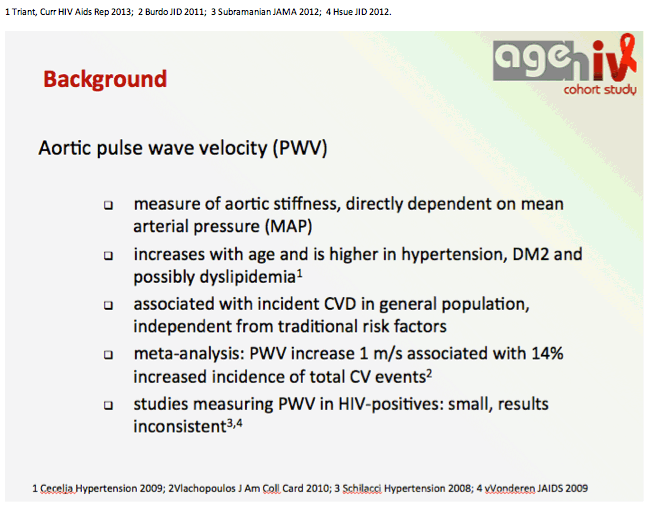
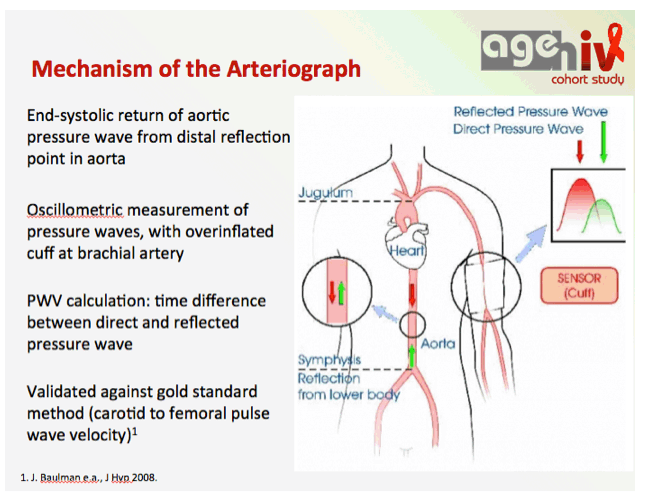
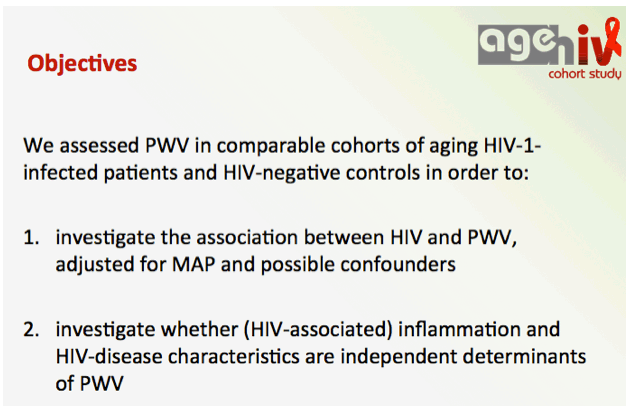

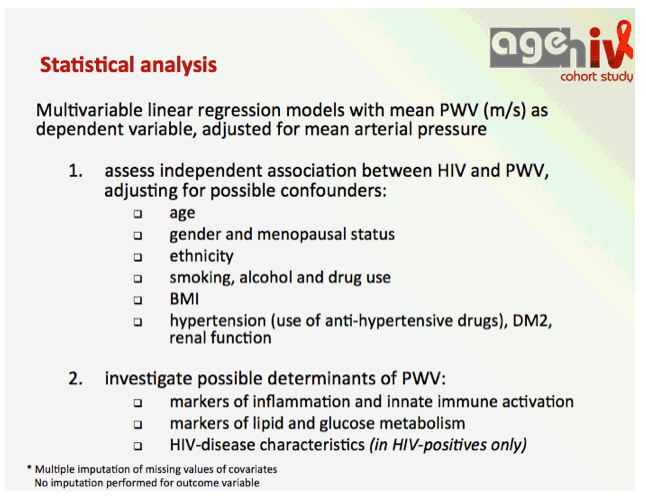
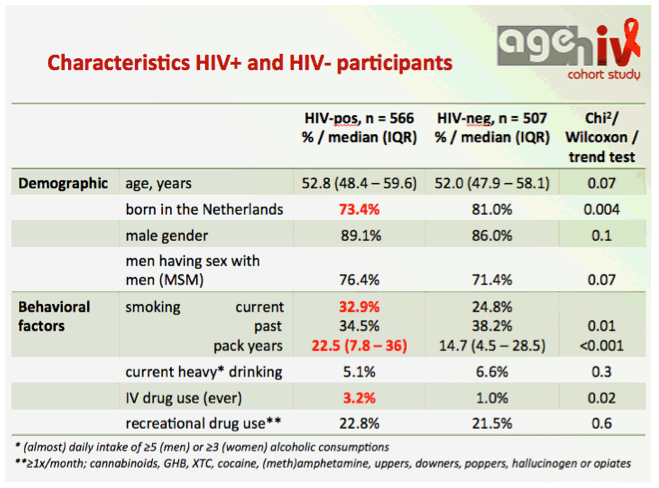
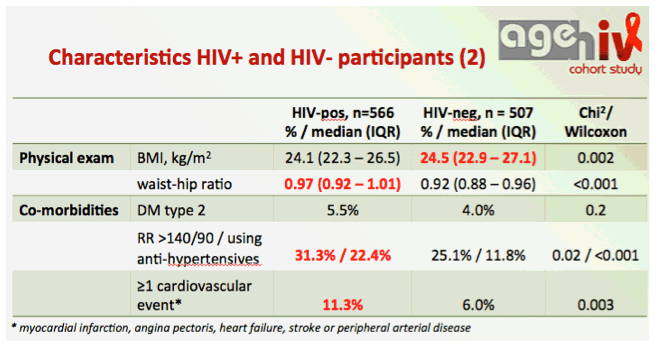
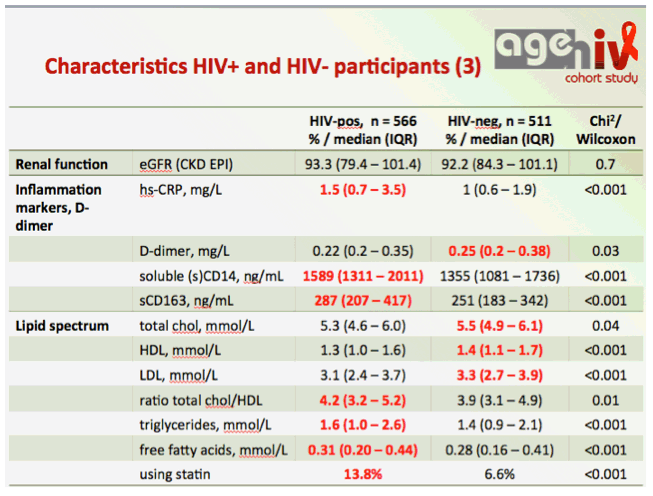
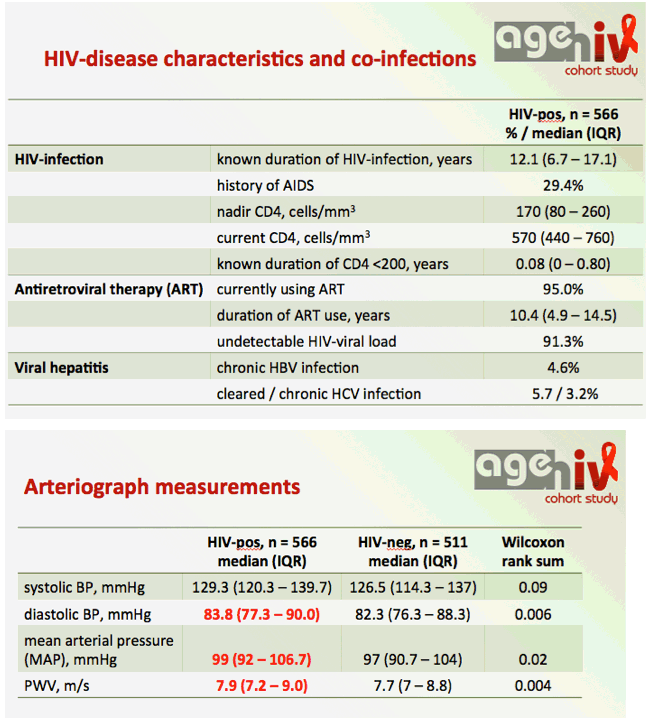

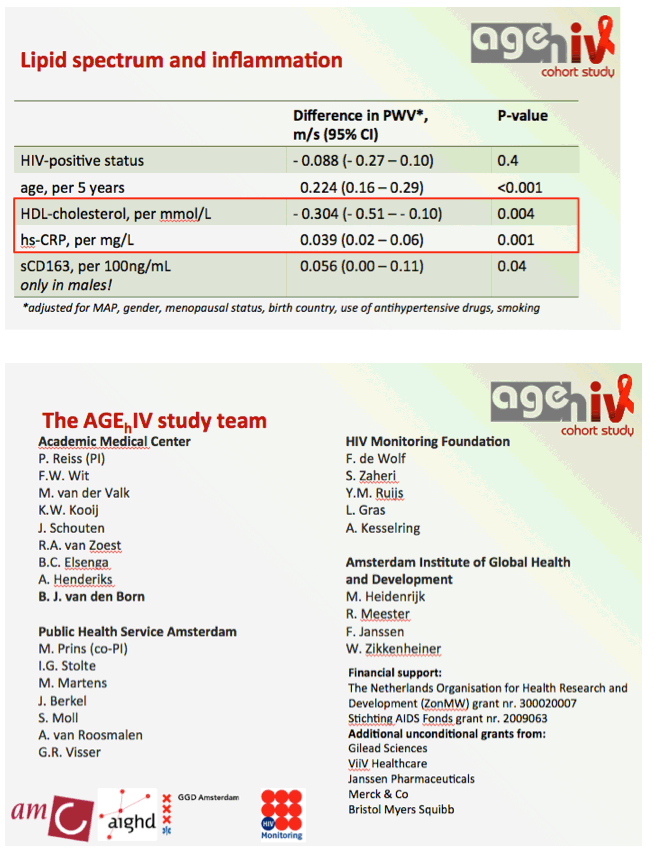
|
| |
|
 |
 |
|
|